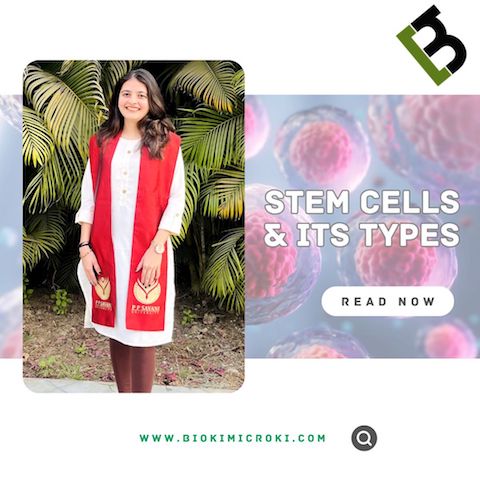Vector are small DNA molecules that are used to carry desired gene in order to insert into desired organism. Vectors are one of the most important tool in Gene cloning, Recombinant DNA Technology and Genetic Engineering. There are different types of natural and artificial vectors. In the given article, one of such natural vector and its strategies are being discussed.
Agrobacterium Tumefaciens is a rod-shaped and gram-negative soil bacterium. It is known for its ability to cause Crown Gall disease in over 140 species of dicotyledonous plants. Crown gall causes cancerous proliferations in stem tissue of the infected plant.
Agrobacterium Tumefaciens is able to do so because of the presence of the Tumour inducing plasmid (Ti plasmid) in the bacterial cell. The Ti plasmid contains a T-DNA region which after infection is integrated into the plant’s genome. It is this T-DNA that stands responsible for the cancerous proliferation. After infection, the genes of T-DNA also synthesise Opines which are a class of carbohydrate derivatives that serve as a nutrient source for the agrobacteria.
For this reason, Agrobacteria are also known as Nature’s smallest Genetic Engineers.

Now, because plants don’t have a naturally occurring plasmid that can be used to genetically modify it, the already available and much efficient Ti plasmid can be used for the same purpose. Unfortunately, there is one problem that needs to be dealt with when using Ti plasmid as a vector for developing transgenic plants, it’s large size. A Ti plasmid can be well over 200kb in size which not only makes it difficult to manipulate the DNA, but it also becomes an impossibility to find a unique restriction site.
Difficult to manipulate the DNA means inserting a foreign DNA will be difficult because of the large size and impossibility to find a unique restriction site means that finding a restriction site which can be cut by a specific restriction enzyme is not possible in such a large plasmid.
There are two solutions to this problem and they are the Binary Vector Strategy and Co-integration Strategy, both of which are discussed below.
1. The Binary Vector Strategy
Binary means double, and here, Binary Vector Strategy means a Two Vector Strategy. As the name suggests, it’s a strategy where two plasmids are used as vectors for inducing genetic modifications.
What’s worth noting here is that it’s not necessary for the T-DNA to be physically attached to the actual Ti plasmid for functioning. In fact, some Agrobacteria strains have naturally occurring binary plasmid systems.
Hence, a two-plasmid system can be used where the T-DNA is present on a smaller plasmid (about 20-30kb in size) and the Virulence and Host-Specificity regions can be present on another plasmid (about 170-180kb in size).
The T-DNA being small enough can be easily manipulated and hence our gene of interest can be easily integrated into it. When both these plasmids are present in the same A. Tumefaciens cell, they complement each other and the genes of the bigger plasmid (containing Virulence and Host-Specificity region) codes proteins that are used by the smaller plasmid (containing T-DNA with G.O.I.) to get integrated into the plant chromosomal DNA. Hence, the Gene of Interest also gets integrated into the plant’s DNA and the desired transgenic characters can be achieved.

2. The Co-integration Strategy
This strategy also involves the action of two plasmids, but not both of them are from the Ti plasmid itself. The Co-integration Strategy differs from The Binary Vector Strategy as it doesn’t involve the functioning of two plasmids individually without being physically attached, instead, it involves recombination of two plasmids to then function as one.
In this strategy, a small E. coli plasmid is taken and a small portion of T-DNA from a Ti Plasmid is integrated into it. The Gene of Interest that is to be cloned is also integrated into a unique restriction site on the E. coli plasmid. Now, this smaller plasmid contains a small portion of T-DNA and the G.O.I.
The bigger plasmid is the whole Ti Plasmid, no changes are made to it.
When both these plasmids are present in the same A. tumefacien cell, they combine due to the naturally occurring recombination process and form a recombinant plasmid. This recombinant plasmid now also includes the G.O.I. When this A. tumefacien infects a plant, the G.O.I. is integrated into the plant’s chromosomal DNA and the desired characteristics can then be obtained.

Applications of Vector Strategies
The application of Vector Strategies is to provide ease in manipulating the genetic makeup of any plant species for our benefit. In simple words, to effortlessly make transgenic plants.
Transgenic plants can be used
- To study molecular biology and metabolic pathways
- To study the function of genes
- To provide Biotic and Abiotic resistance to plants.
- To improve crop yield and quality.
- To produce pharmaceutical products.
Achieving all of the above becomes much easier with the availability of the vector strategies.


